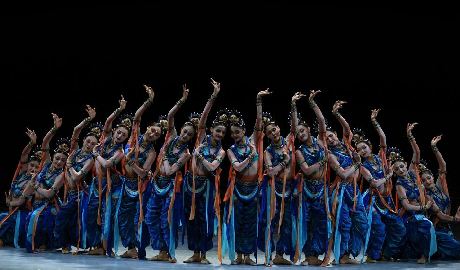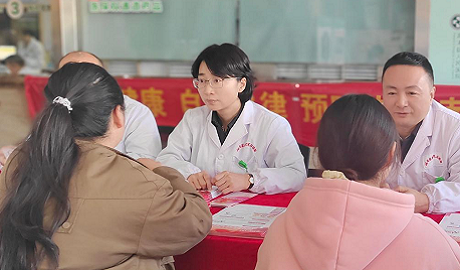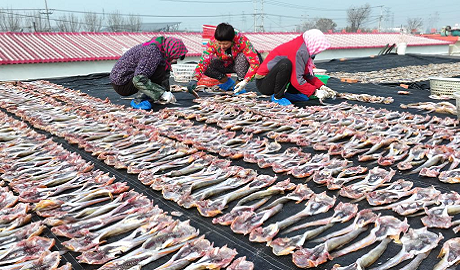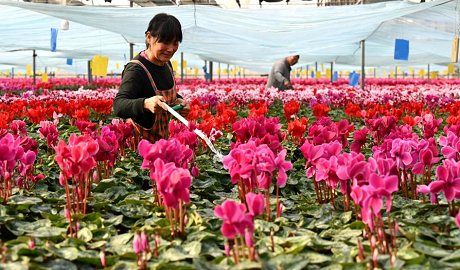

This year marks the eighth anniversary of China's proposal of the “Belt and Road” initiative. Over the past eight years, not only has the initiative gained the understanding and recognition of the vast majority of countries and international organizations, which have actively participated in it, but more importantly, China has taken an active role and, through joint efforts with participating countries, has achieved many tangible results, and is confidently opening up a new prospect for the initiative. We look forward to even greater achievements.
The “Belt and Road” initiative advocates strengthening global connectivity and creating a new model of open and inclusive cooperation to achieve global prosperity.
The basic logic of the initiative is to first strengthen the construction of a global network based on interconnectivity of infrastructures, thereby promoting a smoother flow of economic factors, including goods, capital, technology, people and information, across the globe, bringing into play the different comparative advantages of each country, enabling the effective allocation of various economic resources and promoting common growth, so that all countries involved can reap the maximum benefits and achieve common prosperity.
It is based on such a spirit that, over the past eight years, China has worked closely with the participating countries, with infrastructure connectivity as the starting point and the focus, and has jointly built many major projects, with central enterprises alone investing in more than 3,000 major projects, of which a considerable amount of investment is focused on infrastructure construction. A considerable amount of investment has been focused on infrastructure construction, which has played an important role in effectively improving the infrastructure conditions of the countries concerned.
Taking railway construction as an example, the 1,000-km China-Laos Railway just recently completed the task of laying rails along its entire route, and the multiple-unit trains arrived at the newly completed Vientiane Station of the China-Laos Railway on October 16, and will soon start official operation after passing inspection; the Mombasa–Nairobi Standard Gauge Railway was completed and started commercial operation in May 2017, as a result of which freight costs in East Africa have dropped by more than 70%, promoting trade and economic development along the route in Kenya, and contributing to the country's economic growth. The opening and operation of the Mombasa–Nairobi Standard Gauge Railway has not only greatly facilitated the development of trade in Ethiopia, but also the rapid completion and development of a number of industrial parks along the railway line; two sections of the Serbian section of the Hungarian-Serbian Railway have been successfully opened to traffic last year and in March this year respectively, and the foundation stone laying ceremony for the Hungarian section was held on October 15. Construction of the Yavan High Speed Railway in Indonesia and the Sino-Thai Railway in Thailand is also well underway.
In addition to railway construction, Chinese companies have also engaged in a large number of highway projects in the “Belt and Road” countries over the past eight years. In Kyrgyzstan, for example, a large number of roads have been built by Chinese companies, and most of them have been completed in recent years; the total mileage of roads that China has helped to build in Africa has now exceeded 10,000km, and many projects have also been completed in recent years. The port of Piraeus in Greece has been upgraded by Chinese companies and rapidly transformed from its declining state in the past few years into a hub for maritime business for Asia, Europe and Africa;
Overall, under the framework of “Belt and Road” international cooperation, China has built many infrastructure projects with relevant countries, including land, sea and air transportation, pipeline projects for oil and gas transportation, and information superhighway, which have directly improved and enhanced the level of interconnectivity in such fields as transportation, energy and telecommunications in Asia and the world. These projects have provided important support to promote regional and global economic growth.
Apart from hardware-related infrastructure projects, connectivity also includes many software-related connectivity projects. For example, China has conducted effective communication and consultations with participating countries in terms of rules, systems, strategies, standards, policies, laws and regulations, resulting in new macroeconomic policies, trade and investment rules, fiscal and taxation systems, engineering standards, laws and regulations, etc. that have been accepted bilaterally and multilaterally. This has promoted the construction of soft connectivity between China and the countries concerned, promoted the development of institutional openness in each country, reduced transaction costs and improved the efficiency and level of cooperation.
Over the past eight years, both China and the countries concerned have reaped tangible benefits from these projects and achieved win-win development.
First, it has effectively supported countries in their joint fight against the pandemic. Based on the “Belt and Road” international cooperation platform, China has actively shared its experience in fighting the COVID-19 with many countries since its outbreak, and then sent medical teams in batches, and donated medical equipment and protective products to many countries. China is now conducting joint vaccine trials and joint production with some of the “Belt and Road” countries, and has been supplying vaccines produced in China to the world in different forms according to the different demands. According to statistics, China has provided medical equipment and protective products to nearly 100 countries around the world to combat the pandemic. By September, China had provided more than 1.25 billion doses of vaccines to the world and will reach 2 billion doses for the whole year.
Second, it is vigorously promoting the accelerated economic recovery of countries. In order to promote recovery of the global economy, China has overcome tremendous difficulties, taking advantage of itself being the first to contain the spread of the pandemic, producing and supplying as many equipment and products as possible to countries around the world to aid economic recovery and support people's livelihoods, with the total value of import and export of goods increasing by 1.9% year-on-year in 2020. At the same time, China was also stepping up its investment efforts. In 2020, China invested $153.71 billion in foreign countries, up 12.3% year-on-year.
Third, it provides strong impetus to the development of global green transformation. China has pledged to achieve carbon peaking by 2030 and carbon neutrality by 2060; it has also proposed that China will not build any new coal power projects outside of China. In recent years, China has further promoted the development of renewable energy, increased its efforts in environmental protection, accelerated the construction of national parks and protected biodiversity. China is increasingly investing in renewable energy in “Belt and Road” countries, promoting digital transformation and attaching importance to environmental protection. The “Belt and Road” is being built into a green development path.
Fourth, it is strengthening capacity building for development. Based on its own development experience, China attaches particular importance to the role of the “Belt and Road” in solving the difficulties encountered by developing countries by promoting development.
Fifth, it is building and deepening development partnerships. Through the joint fight against the pandemic, China and other “Belt and Road” countries not only have formed a closer development partnership, but have been deepening and upgrading this partnership, laying a solid foundation for joint efforts to promote the building of a community of a shared future for mankind.
Contributed by Hu Biliang, Executive Director of the Belt and Road School, Beijing Normal University
Translated by Wang Ruoxin

Artists of China National Opera House perform in dance drama "Qiuci" in Beijing


Fishermen dry seafood to supply market in Tangshan City, N China

In pics: flower plants of various kinds bloom at flower base in Hebei

Rongshui County strengthens ethnic culture with cultural resources in S China's Guangxi
点击右上角![]() 微信好友
微信好友
 朋友圈
朋友圈

请使用浏览器分享功能进行分享
